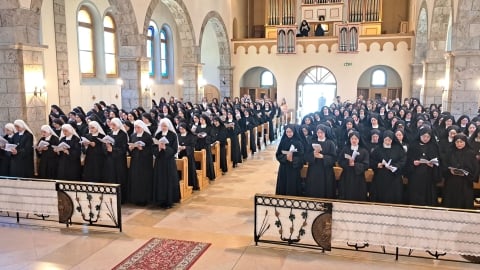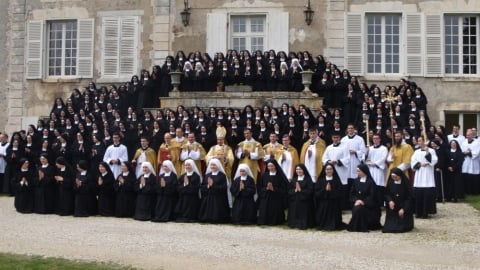A joint document by Catholics and Lutherans

Another example of post-conciliar ecumenical dialogue with Protestants in which the Catholic Church is again on the losing side, thus further contributing to the "silent apostasy".
After three years of work together, the Pontifical Council for Promoting Christian Unity and the World Lutheran Federation published on June 17, 2013, a document entitled: “From Conflict to Communion: Lutheran-Catholic Commemoration of the Reformation in 2017”. It deals with the history and the theology of Martin Luther (1483-1546), the reactions of the Catholic Church to the Reformation and also the developments in the dialogue between Catholics and Lutherans who acknowledge their respective “sins” against unity.
Issued four years before the 500th anniversary of the Reformation, in 2017, this joint document is intended as an appeal to a joint commemoration which will involve recognizing failures and errors, and emphasizing the elements that unite but also those that divide. In an interview with AFP last February, Cardinal Kurt Koch, President of the Council for Promoting Christian Unity, admitted that some theological surveys had been completed, but that their paths diverged in particular “on the practice of bioethics”, which the June 17 document does not speak about.
During the presentation of the document to the press, Cardinal Koch did not hesitate to classify the ecumenical document with the Lutherans along the line of thinking intended by the Reformation: “the true success of the Reformation can be attained only by going beyond inherited divisions,” and consequently “ecumenical efforts aimed at unity are in fact an achievement of the efforts of the Reformation itself.”
In an interview granted on June 24 to Charles de Peychperou for the Roman news agency I.Media, Cardinal Koch summarized this document in three points:
Q. How do you arrive at reconciliation without repentance?
A. The latter is the prerequisite for finding the path of reconciliation. The document contains three fundamental points; repentance is only one of them.
1. We have many reasons to speak about it, because after the Reformation, after the division of the Church, we had horrible wars of religion, especially the Thirty Years War; we had many misunderstandings and wounds, and one cannot get beyond that past without repentance. This is an historical fact: if we look at history after the Reformation and all the wars, we cannot deny this reality.
2. But the second point is gratitude for all that we have been able to do during the past 50 years to rediscover shared bases for unity. The essential part of this document deals with that, with the success of the ecumenical dialogue over the course of the last half-century.
3. The third point is the hope that the joint commemoration of the Reformation will prompt us to take new steps forward in the future."
Comments
This Catholic-Lutheran document extols many areas of theological progress and also mentions the obstacles that still exist, such as the concept of the priesthood or the respective views of the role of the Church…. Despite this, Catholics and Lutherans are now aware, they write, that “the struggle of the 16th century is over.”
This confusion is somewhat reminiscent of the 1998 Joint Declaration on the Doctrine of Justification, which Catholics and Lutherans were able to sign, as was acknowledged even by Cardinal Walter Kasper, then President of the Council for Promoting Christian Unity, only thanks to a “differentiated consensus”, in other words, a “consensual difference” [i.e., they agreed to disagree].
The study by the Society of St. Pius X addressed to all the cardinals in 2004—which to this day has remained without any response on the part of its intended readers—From Ecumenism to Silent Apostasy, stated without mincing words:
Mistaking the constant, unanimous teaching of Tradition that the Mystical Body of Christ is the Catholic Church and that outside of it there is no salvation, this ecumenism has, so to speak, destroyed the most beautiful treasures of the Church because, instead of accepting the unity founded on the whole truth, it tried to construct a unity adapted to a truth wedded to error."
(Sources: Apic/IMedia/Zenit—DICI no. 278, 7-5-2013)





